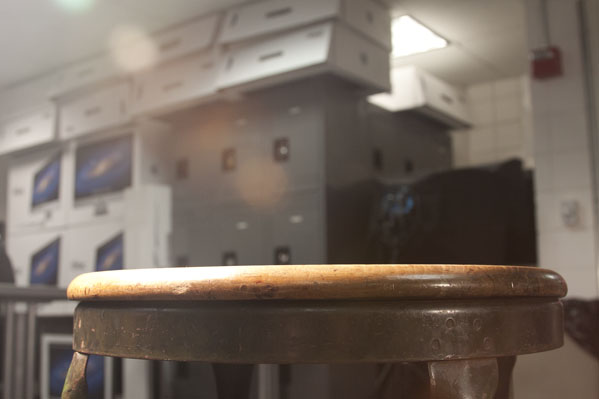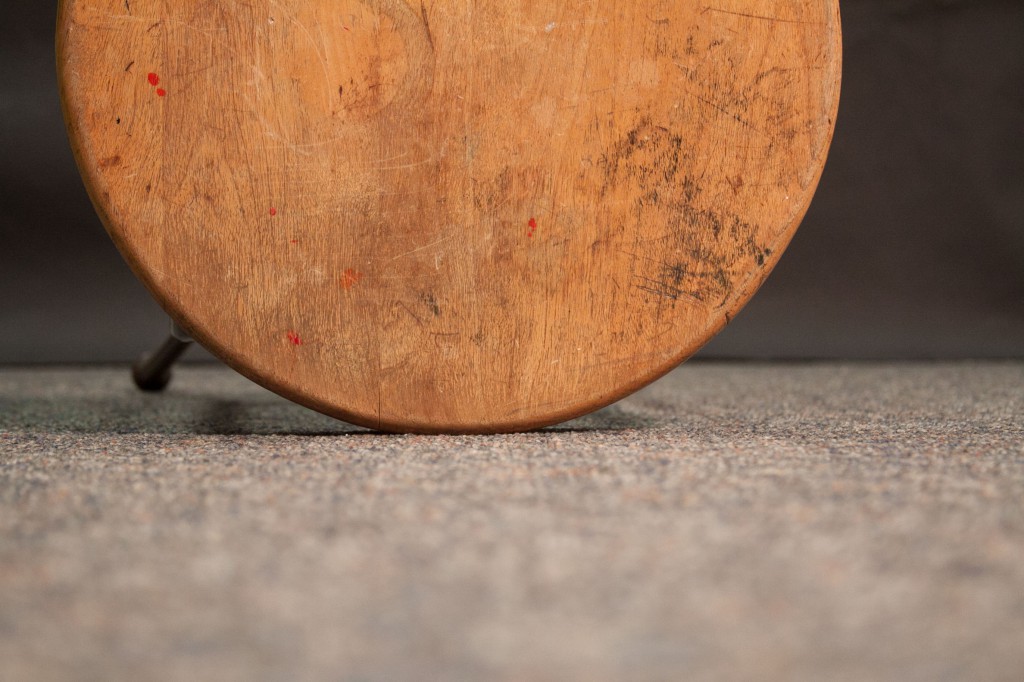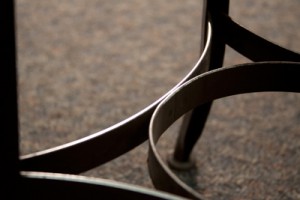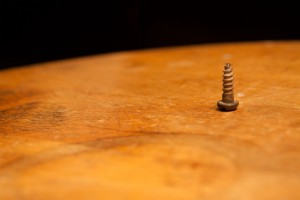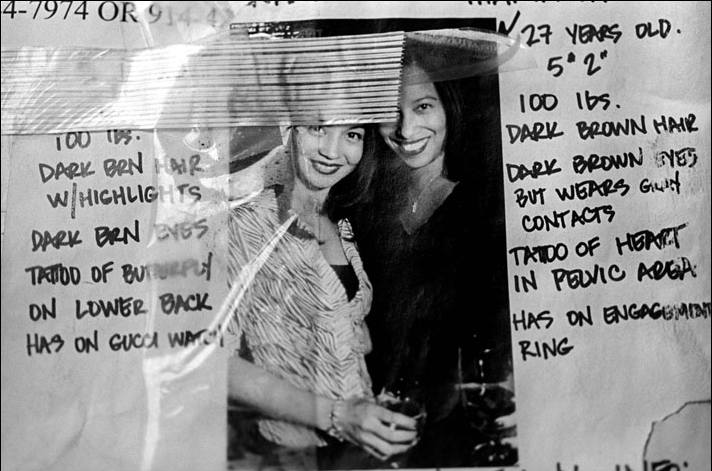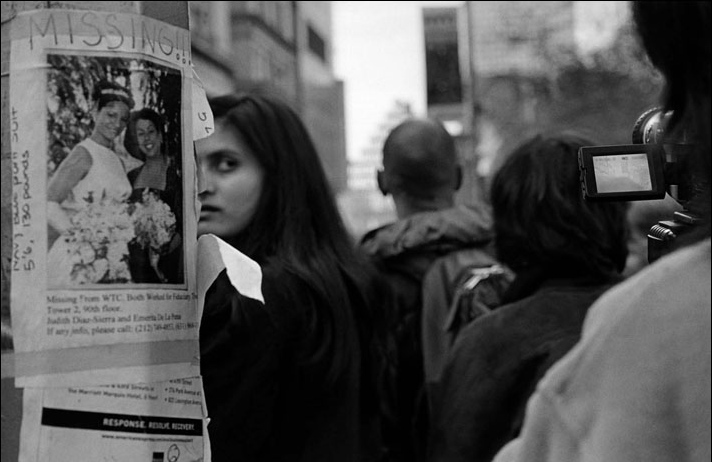
1. What type of photograph is it?
The photograph captures the action, as everyone is moving. I wouldn’t say it makes a great ad or news photograph but it does capture the moment really well and the fact that is not actually perfect as nobody is completely focus gives it a more realistic look.
2. What can you tell (or guess) about the photographer’s intention?
I’d say that the photographer’s original intention was to capture the image of the missing women. I say this because pretty much everyone except the women that happened to suddenly look back is looking away from the camera.
3. What emphasis has the photographer created and how has that been done?
The photographer emphasizes the panic during 9/11. You can see the shock in the women’s eye even though only one is actually showing. Her face expression combined with the missing women poster gives the photo an intense feeling of horror.
4. Do technical matters help or hinder the image?
The photo looks like it was ‘simply taken at the moment’, the fact nobody is actually focused gives it the feeling it already evokes.
5. Are graphic elements important, such as tone, line, or perspective?
The black and white tones are important and give the photograph a feeling of panic. Maybe if it were in full color it would not have the same impact when you first see it. Also because it is a little blurred it adds to the impression that it wasn’t a beautiful day and that perhaps that’s how the people there saw the scene at that moment.
6. What else does the photograph reveal besides what is immediately evident?
I didnt notice much new besides the height and weight of the person written on the taped posters, it’s striking because you can only imagine how desperately that persons family wanted to find her.
7. What emotional or physical impact does the photograph leave?
The photograph leaves a feeling of suspense and shock, it makes you imaging the fear and worry those people were going through.
8. How does this photograph relate to others made by the same photographer, in the same period, or of the same subject matter?
Eugene Richards took a lot of photos during 9/11. Some of them were very similar to this one because they captured signs of missing people. They are all black and white so he kept going for a consistent style. However, in my opinion this one photo stands out a lot more compare to the others because it captures the moment with all the necessary elements and in a more pure form.

